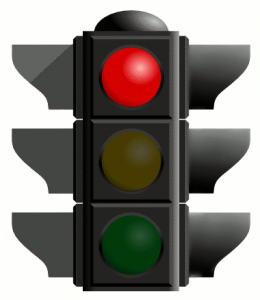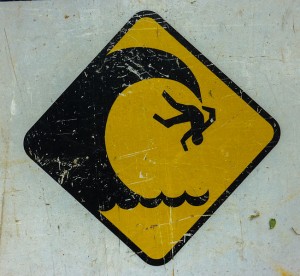 There are a dozen significant economic indicators that are warning that the U.S. economy is heading into a recession. The Dow may have soared past the 15,000 mark, but the economic fundamentals are telling an entirely different story. If historical patterns hold up, the economy is heading for a very rocky stretch. For example, the price of copper is called “Dr. Copper” by many economists because it so accurately forecasts the future direction of the U.S. economy. And so far this year the price of copper is way down. But that is not the only indicator that is worrying economists. Home renovation spending has fallen dramatically, retail spending is crashing in a way not seen since the last recession, manufacturing activity and consumer confidence are both declining, and troubling economic data continues to come pouring out of Asia and Europe. So why do U.S. stocks continue to skyrocket? Will U.S. financial markets be able to continue to be divorced from reality? Unfortunately, as we have seen so many times in the past, when stocks do catch up with reality they tend to do so very rapidly. So you better put on your seatbelts because a crash is coming at some point.
There are a dozen significant economic indicators that are warning that the U.S. economy is heading into a recession. The Dow may have soared past the 15,000 mark, but the economic fundamentals are telling an entirely different story. If historical patterns hold up, the economy is heading for a very rocky stretch. For example, the price of copper is called “Dr. Copper” by many economists because it so accurately forecasts the future direction of the U.S. economy. And so far this year the price of copper is way down. But that is not the only indicator that is worrying economists. Home renovation spending has fallen dramatically, retail spending is crashing in a way not seen since the last recession, manufacturing activity and consumer confidence are both declining, and troubling economic data continues to come pouring out of Asia and Europe. So why do U.S. stocks continue to skyrocket? Will U.S. financial markets be able to continue to be divorced from reality? Unfortunately, as we have seen so many times in the past, when stocks do catch up with reality they tend to do so very rapidly. So you better put on your seatbelts because a crash is coming at some point.
But most average Americans are not that concerned with the performance of the stock market. They just want to be able to go to work, pay the bills and provide for their families. During the last recession, millions of Americans lost their jobs and millions of Americans lost their homes. If we have another major recession, that will happen again. Sadly, it appears that another major recession is quickly approaching.
The following are 12 recession indicators that are flashing red…
#1 The price of copper has traditionally been one of the very best indicators of the future performance of the U.S. economy. The fact that it is down nearly 20 percent so far this year has many analysts extremely concerned…
Copper’s downward trend foreshadows a stock market collapse, according to Societe Generale’s famously bearish strategist Albert Edwards, who said equity markets will riot “Japan-style.”
“Copper is acting exactly as it did when I wrote about the impotence of liquidity in the face of the (then imminent) 2007 recession. Once again it is giving us an early warning that liquidity will not save risk assets: time to get out of equities,” Edwards wrote in his latest research note, on Thursday.
#2 Home renovation spending has fallen back to depressingly-low 2010 levels.
#3 As Zero Hedge recently pointed out, U.S. retail spending is repeating a pattern that we have not seen since the last recession…
Retail sales of clothing is growing at the slowest pace since 2010; but while major store sales are about to drop negative YoY for the first time in over 3 years, the utter collapse in general merchandise sales is worse that at the peak of the last recession at -5%. It seems tough to see how a nation with an economy built on 70% consumption is not in a recessionary environment. And while this alone is a dismal signal for the discretionary upside of the US economy/consumer; as Gluskin Sheff’s David Rosenberg points out real personal income net of transfer receipts plunged at a stunning 5.8% annual rate in Q1. The other seven times we have seen such a collapse, the economy was either in recession of just coming out of one.
#4 Manufacturing activity all over the country is showing signs of slowing down. In fact, Chicago PMI has dipped below 50 (indicating contraction) for the first time since the last recession.
#5 In April, consumer confidence unexpectedly fell to a nine-month low…
The Thomson Reuters/University of Michigan preliminary index of consumer sentiment declined to 72.3 in April from 78.6 a month earlier. This month’s reading was lower than all 69 estimates in a Bloomberg survey that called for no change from the March number.
#6 NYSE margin debt peaked right before the recession that began in 2002, it peaked right before the financial crisis of 2008, and it is peaking again.
#7 The S&P 500 usually mirrors the performance of Chinese stocks very closely. That is why it is so alarming that Chinese stocks peaked months ago. Will the S&P 500 soon follow?
#8 The economic data coming out of the Chinese economy lately has been mostly terrible…
For starters, China’s recent economic data, as massaged as it is to the upside, is downright awful. China’s PMI numbers were the worst in two years. Staffing levels in the Chinese service sector decreased for the first time since January 2009 (remember that year).
China’s LEI also shows no sign of recovery. If anything, it indicates China is heading towards an economic slowdown on par with that of 2008. And if you account for the rampant debt fueling China’s economy you could easily argue that China is posting 0% GDP growth today.
#9 Things just continue to get even worse over in Europe. Unemployment in both Greece and Spain is now about 27 percent, and the unemployment rate in the eurozone as a whole has just set a brand new all-time record high.
#10 Crude inventories have soared to a record high as demand for energy continues to decline. As I have written about previously, this is a clear sign that economic activity is slowing down.
#11 Casino spending is usually a strong indicator of the overall health of the U.S. economy. That is why it is so noteworthy that casino spending is now back to levels that we have not seen since the last recession.
#12 The impact of the sequester cuts is starting to kick in. According to the Congressional Budget Office, the sequester cuts will cost the U.S. economy about 750,000 jobs this year.
Do you have any other recession indicators that you would add to this list?
I invite you to share your thoughts by posting a comment below…








